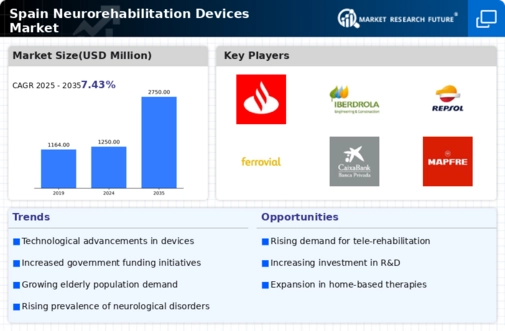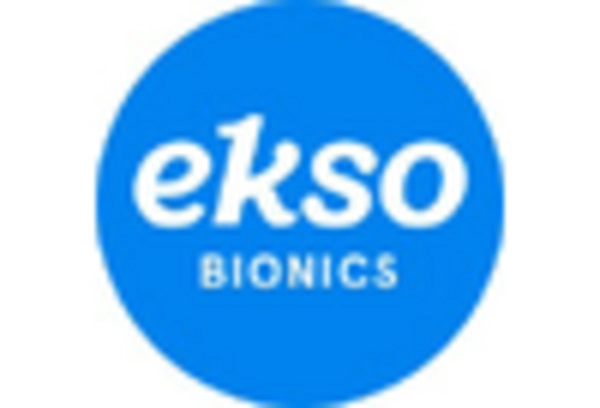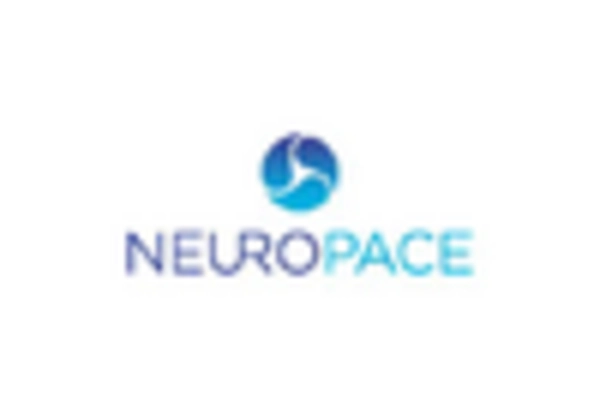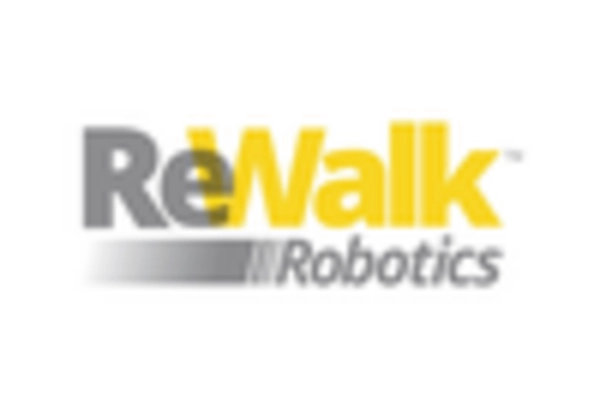Supportive Policy Frameworks
The Spanish government has established supportive policy frameworks aimed at enhancing rehabilitation services, which positively impacts the neurorehabilitation devices market. Initiatives focused on improving access to rehabilitation care and funding for innovative technologies are being implemented. For example, recent policies have emphasized the importance of integrating rehabilitation into primary healthcare, ensuring that patients receive timely and effective treatment. This supportive environment encourages manufacturers to invest in the development of new neurorehabilitation devices, as they can expect a favorable market landscape. As these policies continue to evolve, the neurorehabilitation devices market is likely to benefit from increased adoption and utilization of advanced rehabilitation technologies, ultimately improving patient outcomes.
Increased Healthcare Expenditure
Spain's healthcare expenditure has been on an upward trajectory, which positively influences the neurorehabilitation devices market. The government has allocated substantial resources to enhance healthcare services, including rehabilitation programs. In 2025, healthcare spending is projected to reach approximately €200 billion, reflecting a commitment to improving patient care. This financial support enables hospitals and rehabilitation centers to invest in advanced neurorehabilitation devices, which are essential for effective treatment. Furthermore, as the population ages, the demand for rehabilitation services is likely to increase, prompting further investments in this sector. The neurorehabilitation devices market stands to benefit from this trend, as increased funding allows for the adoption of innovative technologies that can facilitate better recovery outcomes for patients.
Rising Incidence of Neurological Disorders
The increasing prevalence of neurological disorders in Spain is a primary driver for the neurorehabilitation devices market. Conditions such as stroke, multiple sclerosis, and Parkinson's disease are becoming more common, leading to a higher demand for effective rehabilitation solutions. According to recent health statistics, approximately 1 in 6 individuals in Spain will experience a stroke in their lifetime, which underscores the urgent need for advanced neurorehabilitation devices. This growing patient population necessitates innovative technologies that can enhance recovery outcomes. As healthcare providers seek to improve patient care, investments in neurorehabilitation devices are likely to rise, thereby propelling market growth. The neurorehabilitation devices market is expected to expand significantly as healthcare systems adapt to these challenges, with a focus on enhancing recovery outcomes for affected individuals.
Growing Awareness of Rehabilitation Benefits
There is a notable increase in awareness regarding the benefits of neurorehabilitation among both healthcare professionals and patients in Spain. Educational initiatives and campaigns have highlighted the importance of early intervention and continuous rehabilitation for individuals with neurological conditions. This heightened awareness is driving demand for neurorehabilitation devices, as patients and caregivers seek effective solutions to aid recovery. The neurorehabilitation devices market is likely to see growth as more individuals recognize the potential for improved outcomes through the use of advanced technologies. Additionally, healthcare providers are increasingly advocating for the integration of these devices into treatment plans, further propelling market expansion. As awareness continues to grow, the neurorehabilitation devices market may experience a surge in adoption rates.
Technological Integration in Rehabilitation Practices
The integration of cutting-edge technologies into rehabilitation practices is transforming the neurorehabilitation devices market. Innovations such as virtual reality, robotics, and artificial intelligence are being increasingly utilized to enhance rehabilitation outcomes. In Spain, healthcare facilities are beginning to adopt these technologies, recognizing their potential to improve patient engagement and recovery rates. For instance, robotic-assisted therapy has shown promising results in enhancing motor function in stroke patients. This trend suggests that the neurorehabilitation devices market will continue to evolve as new technologies emerge, offering more effective solutions for rehabilitation. As healthcare providers seek to incorporate these advancements into their practices, the demand for innovative neurorehabilitation devices is expected to rise, driving market growth.

















Leave a Comment